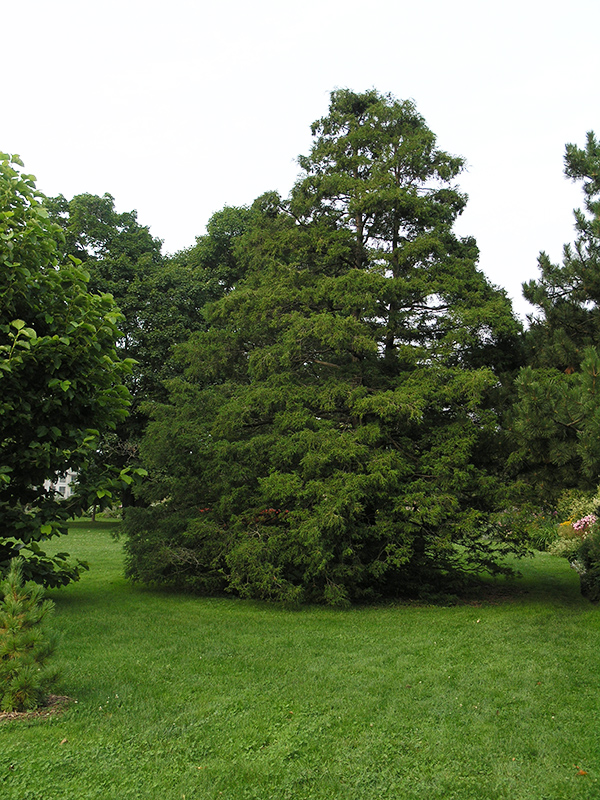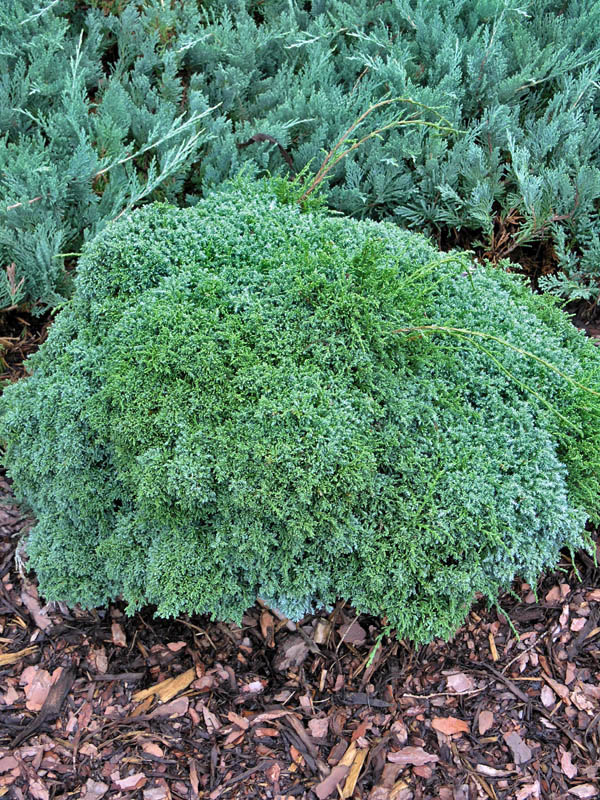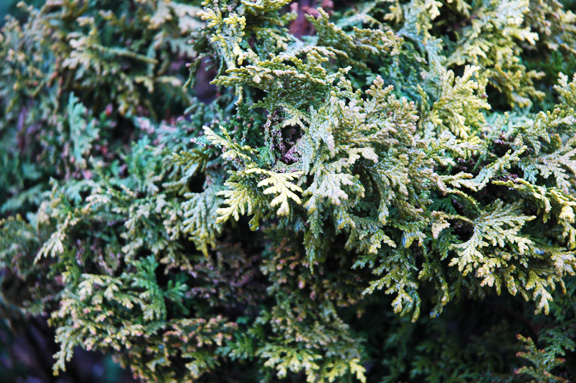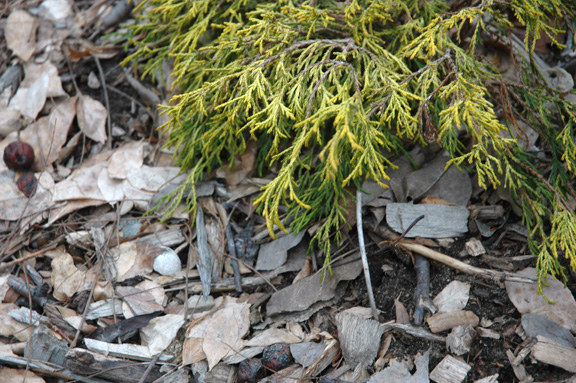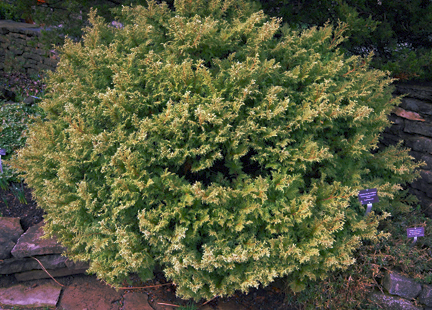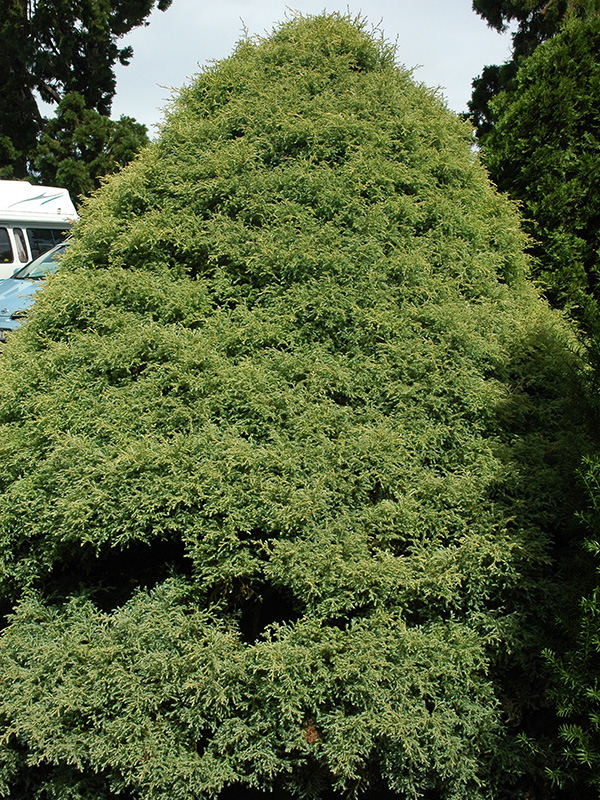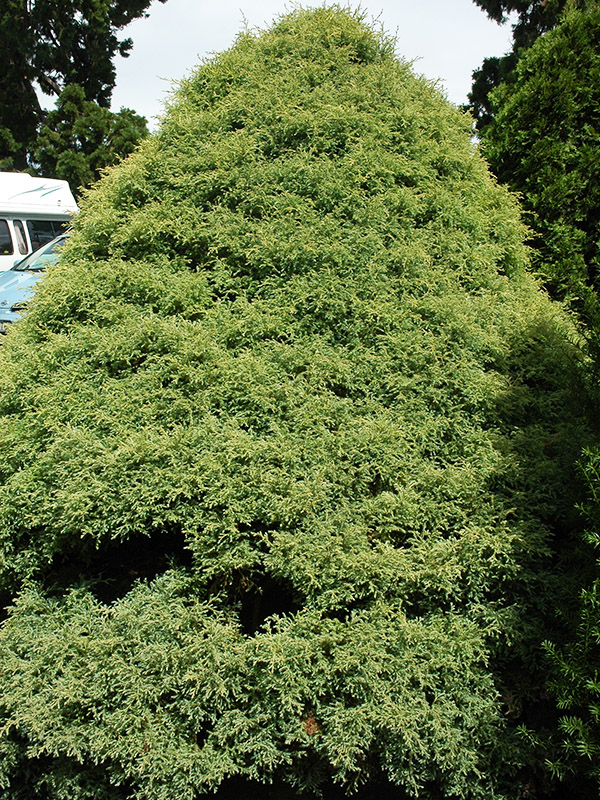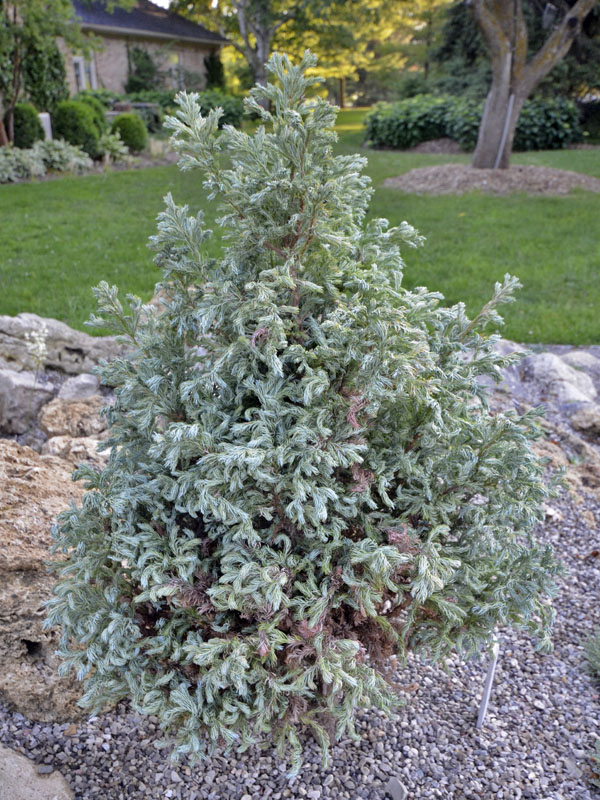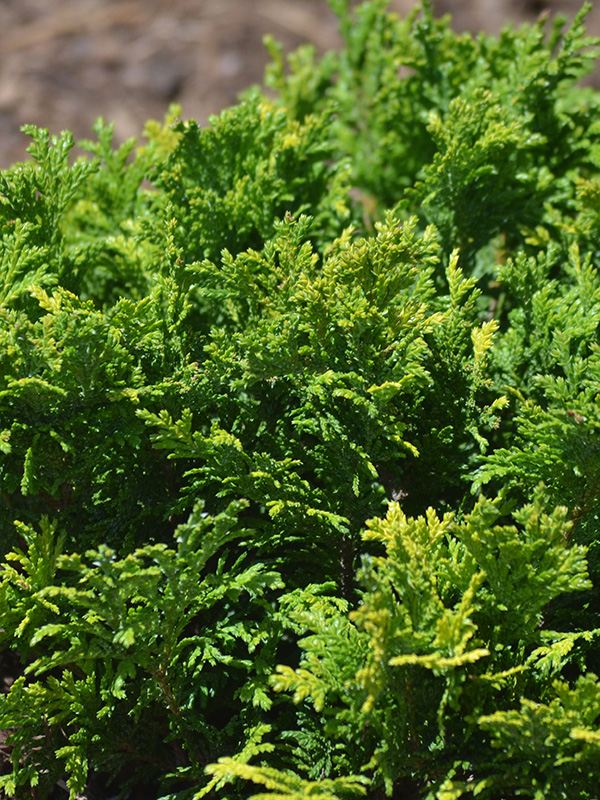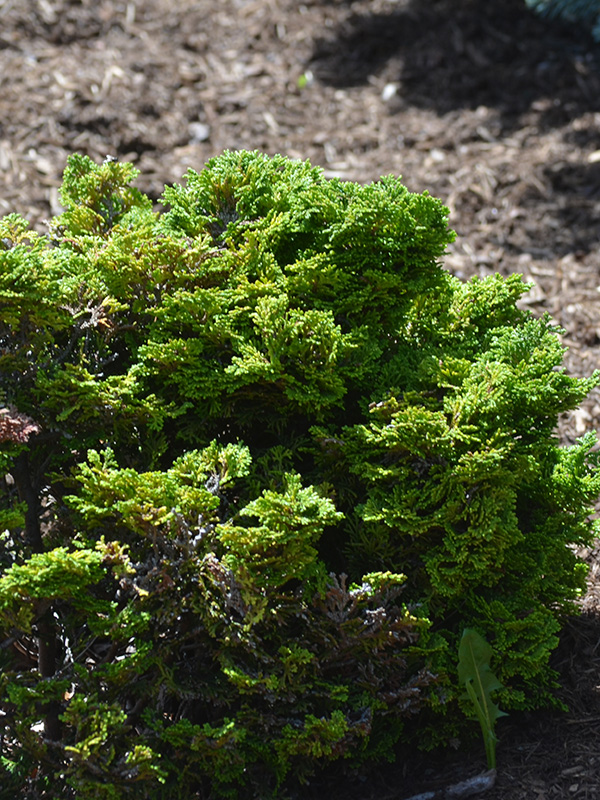
Woody > Chamaecyparis > Chamaecyparis pisifera > Chamaecyparis pisifera
Chamaecyparis pisifera
Japanese Falsecypress
Origin: Native to Japan.
Mike's
Opinion


"
This plant may be considered a bit of a tramp in the landscape since it becomes haggard with age.
Michael Pascoe, NDP., ODH., CLT., MSc. (Plant Conservation)
"
| Family |
| Cupressaceae |
| Genus |
| Chamaecyparis |
| Species |
| pisifera |
| Category |
| Woody |
| Type |
| Tree (evergreen) |
| Pronunciation |
| USDA Hardiness Zone |
| 4-8 |
| Canadian Hardiness Zone |
| 3-9 |
| Temperature (°C) |
| Hardy up to 0 (C) |
| Temperature (°F) |
| Hardy up to 0 (F) |
| Height |
| 16-23 m |
| Spread |
| 3-6 m |
Photographs
Description and Growing Information
Flowering Period
| General Description |
| Large evergreen tree with straight trunk and open, narrow, pyramidal crown. Bark reddish-brown, fibrous, shreddy, peeling in long thin strips. |
| Landscape |
| Ideally used to the rear of a border as a backdrop to other plants. Since it is a large plant it best suited to park-like landscape. |
| Cultivation |
| Plant in full sun, water regularly but do not overwater. Plant in a moist, well drained soil; it will not tolerate wet feet. |
| Shape |
| Large, loosely pyramidical evergreen tree. |
| Growth |
| Slow |
| ID Characteristic |
| The Japanese Falsecypress has white lines on the underside of its scales as well as exfoliating bark. |
| Pests |
| Tip blight can be a problem in early stages of its growth. |
| Habitat |
| Naturally occurs in Japan, prefers moist soil and full sun, drought tolerant. |
| Bark/Stem Description |
| Reddish brown, exfoliates in long thin strips. |
| Flower/Leaf Bud Description |
| Palm shaped, brown. |
| Leaf Description |
| Dark green, scale like, sharp and overlapping. |
| Flower Description |
| Monoecious, not of ornamental importance. |
| Fruit Description |
| Small cones with very few scales. Scales are soft to the touch. Cones can be clustered at shoot tips. |
| Colour Description |
| Dark green, browns in winter. Red-brown bark. |
| Texture Description |
| Medium. |
| Propagation |
| Stem cuttings. |
